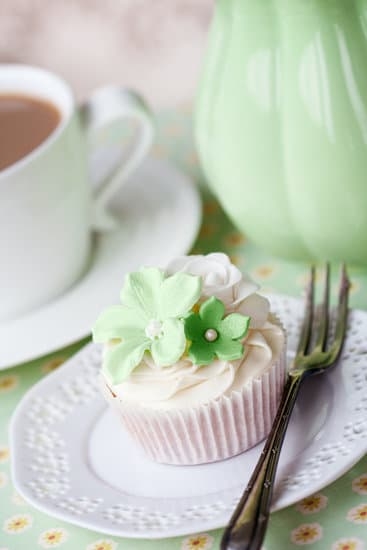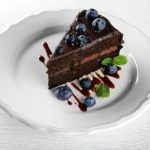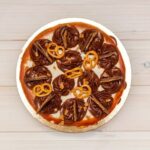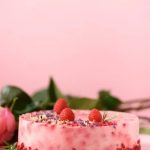Are you looking to enhance your cake decorating skills? One essential tool in a baker’s arsenal is edible glue, which helps adhere decorations securely onto cakes. In this article, we will explore how to make edible glue for cake decorating, offering a cost-effective and easy-to-make solution for all your creative confectionery needs.
Edible glue serves as a versatile adhesive in cake decorating, allowing you to attach fondant pieces, sugar flowers, and other decorative elements with precision and ease. By creating your own edible glue at home, you can customize the consistency and strength of the adhesive to suit different types of decorations and cake designs.
Whether you are a beginner or experienced baker, learning how to make edible glue opens up a world of possibilities in creating stunning cakes for various occasions. From intricate detailing to elaborate designs, having homemade edible glue on hand can elevate your decorating game and bring your sweet creations to life in ways that store-bought options may fall short.
Stay tuned as we delve into the benefits of using edible glue in cake decorating and explore the different types you can easily whip up in your own kitchen.
Benefits of Using Edible Glue in Cake Decorating
Using edible glue in cake decorating can offer a range of benefits that can elevate your creations to the next level. Unlike traditional glue, edible glue is safe to consume and ensures that your cake remains not only beautiful but also completely edible. Here are some of the key benefits of using edible glue in your cake decorating projects:
Safe and Edible
One of the primary benefits of using edible glue is that it is safe for consumption. Traditional glues contain chemicals that should not be ingested, but with edible glue made from food-safe ingredients, you can rest assured that your creations are safe to eat. This is especially important for special occasions like weddings or birthdays where guests will be indulging in your cake.
Seamless Finishing
Edible glue provides a seamless finishing touch to your cakes and decorations. Whether you are attaching fondant flowers, sugar figurines, or other delicate embellishments, edible glue allows for a secure bond without leaving any visible traces behind. This ensures that your final design looks professional and polished.
Versatile and Customizable
Another benefit of using homemade edible glue for cake decorating is its versatility. You can customize the consistency and stickiness of the glue based on your specific needs. Additionally, you can experiment with different flavors or colors to enhance the overall aesthetic of your cake design. This flexibility allows you to unleash your creativity and take your decorating skills to new heights.
Overall, incorporating edible glue into your cake decorating toolkit can enhance the visual appeal, safety, and customization options of your creations. By utilizing this versatile adhesive, you can achieve professional-looking results while ensuring that every aspect of your cake is completely safe for consumption.
Different Types of Edible Glue You Can Make at Home
When it comes to cake decorating, having the right adhesive is crucial for ensuring that your decorations stay in place. While there are many commercial edible glue options available in stores, making your own at home can be a cost-effective and customizable alternative. In this section, we will explore different types of edible glue that you can easily make in your own kitchen.
Royal Icing Edible Glue
One popular type of edible glue for cake decorating is royal icing. Made with powdered sugar, egg whites, and lemon juice, royal icing is easy to make and has a strong binding power. To create royal icing edible glue, simply mix one cup of powdered sugar with one egg white and a few drops of lemon juice until you achieve a thick consistency. This type of edible glue works well for attaching heavier decorations such as flowers or fondant accents.
Gum Paste Glue
Another common type of edible glue used in cake decorating is gum paste glue. This glue is made by combining warm water with tylose powder or gum tragacanth powder to create a sticky paste. Gum paste glue is particularly useful for attaching delicate sugar flowers or intricate details to your cakes.
To make gum paste glue, mix 1/4 teaspoon of tylose powder with 2 tablespoons of warm water until the powder dissolves completely. Allow the mixture to rest for a few hours before using it as adhesive.
Chocolate Glue
For those who prefer working with chocolate, chocolate glue can be a tasty and effective option for attaching decorations to cakes. To make chocolate glue, simply melt some chocolate chips or candy melts in the microwave or over a double boiler until smooth. Let the melted chocolate cool slightly before using it as an adhesive. Chocolate glue works well for securing items like cookies, candies, or other chocolate decorations onto your cakes.
By experimenting with these different types of edible glues at home, you can find the one that best suits your decorating needs and preferences. Making your own edible glue not only allows for creative freedom but also ensures that you have full control over the ingredients used in your cake decorating projects.
Essential Ingredients for Making Edible Glue
When it comes to making edible glue for cake decorating, it’s essential to have the right ingredients on hand. One of the most common and effective recipes for edible glue includes water, tylose powder, and light corn syrup. Tylose powder is a key ingredient as it helps give the glue a sticky consistency that will securely hold fondant, gum paste, or other decorations in place on your cakes.
Another important ingredient you can use to make edible glue is gum tragacanth or CMC powder. These are alternatives to tylose powder and serve a similar purpose in creating a strong adhesive for your cake decorations. Additionally, you can also opt to add some clear vanilla extract or other flavorings to your edible glue recipe to give it a pleasant taste when used on your cakes.
If you’re looking for a vegan-friendly option, you can substitute light corn syrup in your edible glue recipe with agave nectar or golden syrup. These alternatives work just as well in creating a sticky adhesive for your cake decorations without the use of any animal by-products. Experimenting with different ingredients can help you find the perfect combination that works best for your specific needs when decorating cakes.
| Ingredient | Alternative |
|---|---|
| Tylose Powder | Gum Tragacanth or CMC Powder |
| Light Corn Syrup | Agave Nectar or Golden Syrup |
Step-by-Step Guide on How to Make Edible Glue for Cake Decorating
One of the essential components of cake decorating is edible glue. It acts as a versatile adhesive that helps secure fondant, gum paste, and other decorations onto your cake. Making edible glue at home is not only cost-effective but also ensures that you are using safe and edible ingredients in your creations. In this section, we will provide you with a step-by-step guide on how to make edible glue for cake decorating.
To make your own edible glue, you will need a few simple ingredients that are readily available in most kitchens. One popular recipe involves mixing 1/4 teaspoon of tylose powder with 2 tablespoons of warm water until the powder dissolves completely. This mixture can be stored in an airtight container and used as needed for your cake decorating projects.
Another common method to create edible glue is by combining 1 cup of powdered sugar with 1-2 tablespoons of water until you achieve a thick and sticky consistency. This type of edible glue works well for attaching heavier decorations or assembling intricate structures on your cakes. Experimenting with different ratios of sugar to water can help you customize the thickness and tackiness of the glue based on your specific needs.
Using homemade edible glue for cake decorating not only provides a secure bond between elements but also allows for greater creativity in design. Whether you are sticking small details like flowers and beads or constructing multi-tiered cakes, knowing how to make edible glue gives you the flexibility to bring your visions to life without worrying about toxic chemicals.
With this step-by-step guide, you can elevate your cake decorating skills and impress your family and friends with beautiful and delicious creations.
| Ingredients | Recipe |
|---|---|
| Tylose powder – 1/4 teaspoon | Dissolve tylose powder in 2 tablespoons of warm water |
| Powdered sugar – 1 cup | Mix powdered sugar with 1-2 tablespoons of water to desired consistency |
Tips and Tricks for Using Edible Glue Effectively
When it comes to using edible glue for cake decorating, there are some tips and tricks that can help ensure your decorations stay in place and look seamless. Here are some helpful suggestions to maximize the effectiveness of your edible glue:
1. Use a small brush: When applying edible glue to your decorations or fondant pieces, using a small brush can help you control the amount of glue used and apply it precisely where needed. This can prevent excess glue from seeping out and ruining your design.
2. Allow the glue to set: After applying edible glue to your decorations, give it some time to set before attaching them to your cake. Allowing the glue to dry slightly will create a stronger bond between the decorations and the cake surface, making them less likely to shift or fall off.
3. Be mindful of moisture: Edible glue works best when used on dry surfaces. If you are working with fondant or gum paste decorations, make sure they are completely dry before applying any edible glue. Excess moisture can weaken the bond created by the glue, leading to potential mishaps during decorating.
By following these tips and tricks, you can make sure that your edible glue is used effectively in your cake decorating projects. Whether you’re attaching intricate sugar flowers or securing delicate details, proper application of edible glue can make all the difference in achieving professional-looking results.
Storage and Shelf Life of Homemade Edible Glue
Homemade edible glue is an essential tool in any cake decorator’s arsenal, especially for intricate designs and delicate details. Knowing how to properly store and extend the shelf life of this edible adhesive can make a significant difference in your baking projects. By following some simple tips and guidelines, you can ensure that your homemade edible glue stays fresh and effective for as long as possible.
One key factor in preserving the shelf life of homemade edible glue is storing it properly. It is best to keep your edible glue in a sealed container at room temperature, away from direct sunlight and moisture. Make sure to keep it in a cool, dry place to prevent any bacterial growth or mold formation. If you live in a hot and humid climate, consider storing your edible glue in the refrigerator to prolong its shelf life.
Another important aspect to consider is the duration for which you can safely use your homemade edible glue. While commercially available edible glues have expiration dates, homemade versions typically do not. However, it is recommended to use your homemade glue within 1-2 months for optimal freshness and effectiveness.
Discard any leftover glue that shows signs of spoilage, such as strange odors or changes in texture or color. This will ensure that your cake decorating projects are not compromised by using expired adhesive.
Creative Ways to Use Edible Glue in Cake Decorating
When it comes to cake decorating, using edible glue can open up a whole new world of creative possibilities. Edible glue is not only practical for securing decorations onto cakes but can also be used in innovative ways to enhance the overall design. Here are some creative ways you can use edible glue in your cake decorating projects:
- Creating intricate patterns: Use edible glue to adhere small edible decorations such as shimmer pearls or sprinkles in elaborate patterns on your cake. The adhesive properties of the glue will ensure that the decorations stay in place and add a touch of elegance to your design.
- Constructing 3D designs: Edible glue is perfect for constructing 3D designs on cakes, such as fondant flowers or figurines. By applying a small amount of glue between the layers of fondant, you can easily build up intricate shapes and structures that will impress your guests.
- Adding texture: Experiment with using edible glue to add different textures to your cakes. For example, you can create a sugar crystal effect by brushing a thin layer of edible glue onto the surface of the cake and then sprinkling sugar over it. This technique adds visual interest and dimension to your design.
In addition to these creative uses, edible glue can also be used for practical purposes such as repairing cracks or attaching delicate elements like wafer paper or rice paper decorations. By mastering the art of using edible glue in cake decorating, you can take your creations to the next level and impress everyone with your attention to detail and creativity.
- Moreover, experimenting with different types of edible glues at home allows you to customize the adhesive properties based on your specific needs and preferences
- Knowing how to make edible glue for cake decorating gives you more control over what ingredients are used, ensuring that your creations are not only visually appealing but also safe for consumption
- In conclusion, incorporating creative uses of edible glue into your cake decorating projects can elevate your designs and showcase your skills as a decorator. Whether you are crafting intricate details or adding texture and depth to your cakes, edible glue is a versatile tool that can help bring your vision to life.
Conclusion and Final Thoughts on DIY Edible Glue for Cake Decorating
In conclusion, making your own edible glue for cake decorating is a simple and cost-effective way to enhance your creations. By using common ingredients found in your kitchen, you can create a versatile adhesive that will help you secure decorations, attach fondant pieces, and even construct multi-tiered cakes with ease.
The benefits of using homemade edible glue include avoiding any potentially harmful chemicals found in store-bought versions, as well as the satisfaction of knowing exactly what is going into your culinary creations.
Experimenting with different types of edible glue can also add a unique touch to your cake decorating projects. From basic sugar glues to more advanced solutions like tylose glue or royal icing, each variation offers its own set of advantages depending on the specific needs of your design. By understanding the essential ingredients needed for making edible glue and following a step-by-step guide, you can easily customize the consistency and strength of the adhesive to suit your preferences.
In addition to mastering the art of creating edible glue at home, incorporating tips and tricks for using it effectively can elevate the overall appearance of your cakes. Whether you are a beginner or an experienced baker, understanding proper storage methods and shelf life will ensure that your homemade edible glue remains fresh and ready for use whenever inspiration strikes.
Get creative by exploring innovative ways to utilize edible glue in cake decorating beyond just sticking decorations together – consider experimenting with techniques like painting with edible glue or creating intricate patterns for a truly standout dessert presentation.
Frequently Asked Questions
What Can I Use Instead of Edible Glue?
Instead of edible glue, you can use royal icing, gum paste, or a mixture of powdered sugar and water in your baking projects. These alternatives are easy to make at home and work well for attaching decorations to cakes or cookies.
Can You Make Your Own Edible Glue?
Yes, you can definitely make your own edible glue at home. One common recipe involves mixing powdered sugar with a small amount of water until you reach a desired consistency. You can also use tylose powder mixed with water to create a stronger adhesive for sugar decorations on cakes.
What Ingredients Are in Edible Glue?
The ingredients in edible glue typically include powdered sugar and water. Some recipes may call for the addition of tylose powder, gum arabic, or CMC powder to improve the adhesive properties of the glue. These ingredients are safe for consumption and commonly used in cake decorating projects.

Welcome to our cake decorating blog! My name is Destiny Flores, and I am the proud owner of a cake decorating business named Cake Karma. Our mission is to provide delicious, beautiful cakes for all occasions. We specialize in creating custom cakes that are tailored specifically to each customer’s individual needs and tastes.





